The Top 5 Teeth Whitening Pens Worth Buying in 2025
Key Takeaways
- The top teeth whitening pens in 2025 offer effective stain removal with Colgate Optic White Overnight leading for overall value and results.
- Whitening pens work by using peroxide-based gels to break down stain molecules, with results typically visible within 1-2 weeks of consistent use.
- People with sensitive teeth should consider Moon Oral Beauty Platinum or Lumineux Bright peroxide-free pens to avoid discomfort while still achieving noticeable brightening.
| Table of Contents |
| 1. Best Teeth Whitening Pens of 2025: by Tribeca Dentist Dr. Frederick Solomon in NYC |
| 2. Colgate Optic White Overnight Teeth Whitening Pen - For Maximum Whitening Power |
| 3. Moon Oral Beauty Platinum Teeth Whitening Pen - For Sensitive Teeth |
| 4. Lumineux Bright² Pen - For Natural/Peroxide-Free Options |
| 5. SNOW Teeth Whitening Serum Pen - For Flexibility |
| 6. VieBeauti Teeth Whitening Pen - For Budget Consideration |
| 7. How Teeth Whitening Pens Work: The Science Behind a Brighter Smile |
| 8. What to Look for in a Quality Teeth Whitening Pen |
| 9. Comparing the Best Whitening Pens: Side-by-Side Analysis |
| 10. Best Practices for Using Teeth Whitening Pens |
| 11. Frequently Asked Questions About Teeth Whitening Pens |
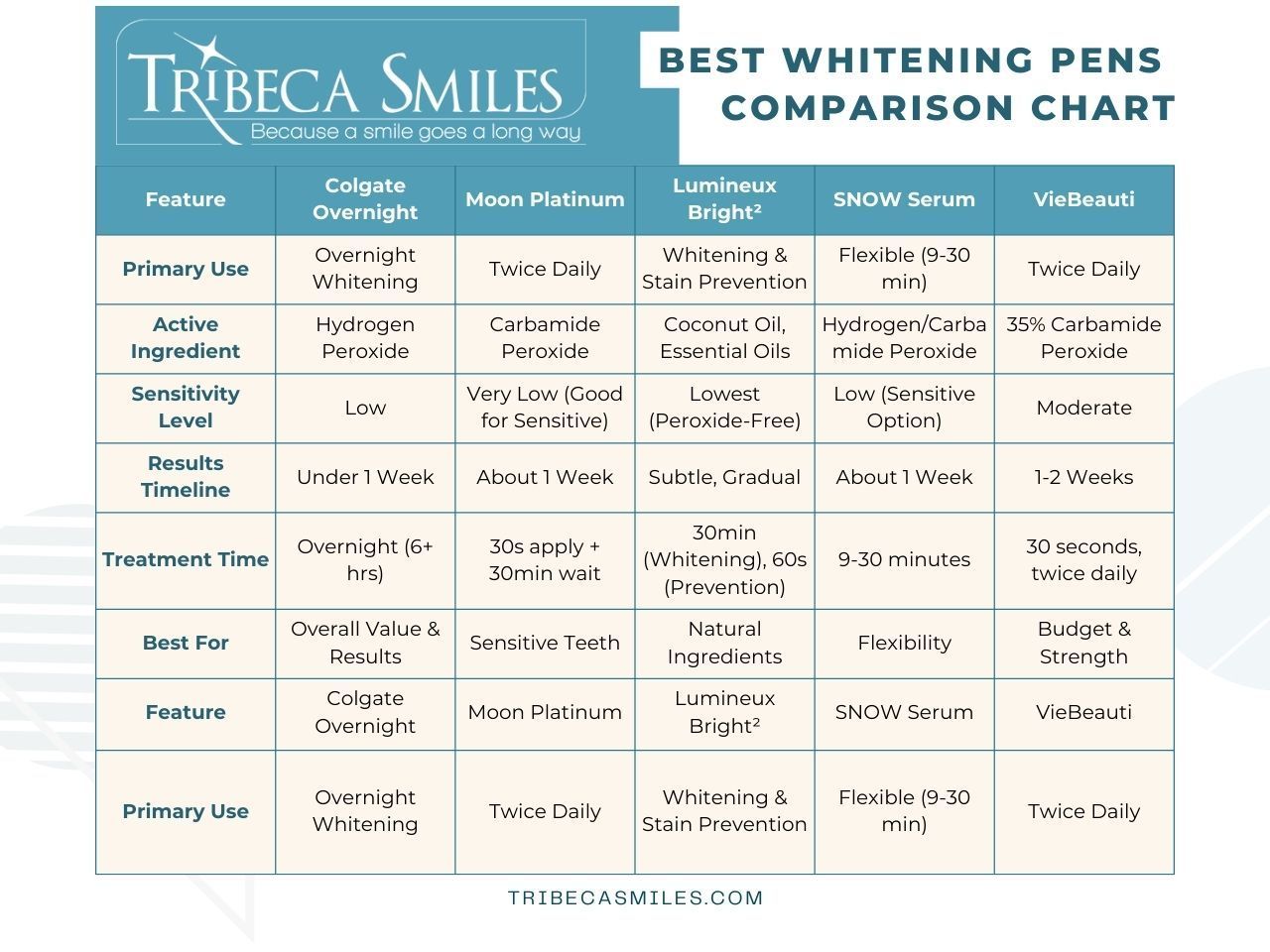
Best Teeth Whitening Pens of 2025: Detailed Reviews by Tribeca Dentist Dr. Frederick Solomon in NYC
"Do these whitening pens actually work?" It's the question I hear daily at my
Tribeca dental practice. As the founder of
Tribeca Smiles in NYC, I've watched patients waste hundreds on ineffective whitening products.
Frustrated by the misinformation out there, I decided to personally test every major whitening pen on the market—applying them to my own teeth and tracking results meticulously. After two months of testing and gathering feedback from my Manhattan patients, I've identified the five whitening pens that genuinely deliver results.
Let me be clear: these aren't magical solutions!
They won't match in-office professional treatments,
such as KöR whitening, but they can noticeably brighten your smile when used correctly. Here's my unfiltered assessment as a practicing Tribeca dentist with over 1,500 whitening procedures under my belt.
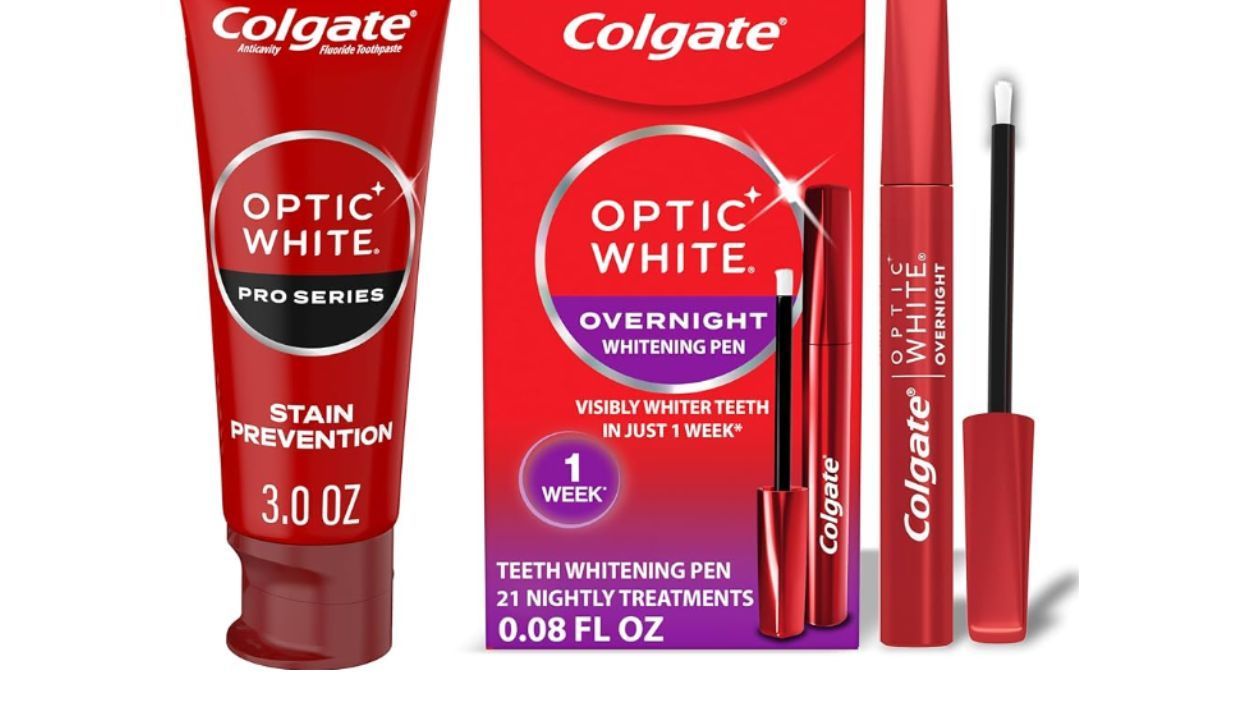
1. Colgate Optic White Overnight Teeth Whitening Pen - For Maximum Whitening Power
- Features a hydrogen peroxide formula that adheres to teeth throughout the night
- Provides visible results in less than a week with consistent use
- Offers approximately 35 treatments for $15-20, making it excellent value
The Colgate Optic White Overnight Pen stands out as the top choice for those seeking dramatic whitening results without spending a fortune. What makes this pen exceptional is its unique overnight formula that stays on your teeth much longer than competitors, giving the active ingredients more time to break down stubborn stains.
Application couldn't be simpler - just apply before bed and let it work while you sleep. The formula quickly dries into a thin, adherent film that remains active throughout the night, then simply brush it away in the morning.
The precision applicator tip allows you to target specific problem areas, and despite its powerful hydrogen peroxide formula, most users report minimal sensitivity thanks to its enamel-protective ingredients.
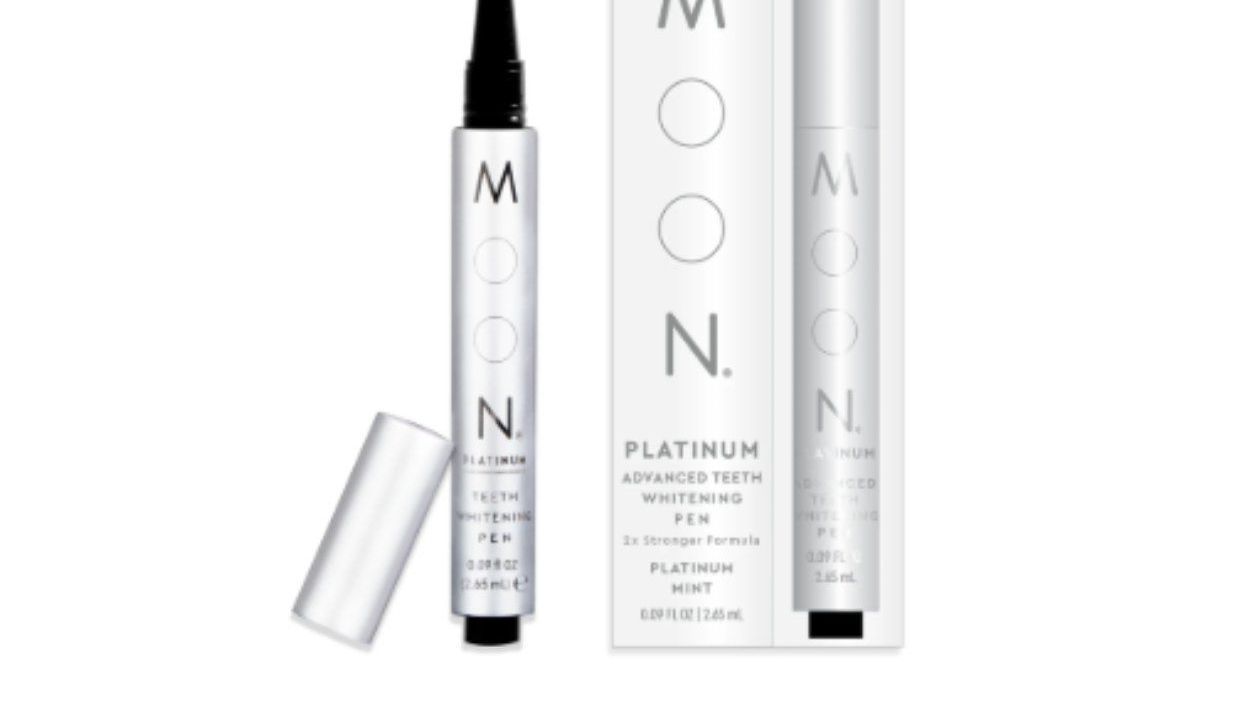
2. Moon Oral Beauty Platinum Teeth Whitening Pen - For Sensitive Teeth
- Features the "Elixir III" blend with gentler carbamide peroxide plus soothing botanicals
- Includes light-reflecting particles for an immediate brightening effect
- User-friendly click-pen design with pleasant vanilla mint flavor
The Moon Platinum pen is the ideal solution for those who want effective whitening but struggle with tooth sensitivity. This innovative pen combines the gentle whitening power of carbamide peroxide with calming ingredients like lavender oil, strawberry fruit extract, and honeysuckle to minimize discomfort while still delivering noticeable results.
What makes this pen stand out is its thoughtful formulation that addresses the most common complaint about whitening products - sensitivity. The pleasant vanilla mint flavor and simple application design make it enjoyable to use, though you'll need to leave it on for 30 seconds and avoid eating or drinking for 30 minutes afterward.
At around $25, it offers good value for a specialized formula designed specifically for sensitive teeth.

3. Lumineux Bright² Pen - For Natural/Peroxide-Free Options
- Contains only natural ingredients including coconut oil, sage oil, and Dead Sea salt
- Functions as both a whitener and stain preventative
- Zero sensitivity with certified non-toxic, microbiome-friendly formula
The Lumineux Bright² pen represents the gold standard for those seeking a completely peroxide-free whitening solution. Instead of harsh chemicals, this innovative pen harnesses the power of natural ingredients like coconut oil, sage oil, lemon peel oil, and Dead Sea salt to lift stains gently without causing any sensitivity.
What truly sets this pen apart is its dual-action functionality - not only does it whiten teeth, but it also helps prevent new stains from forming. This preventative approach makes it perfect for coffee and wine enthusiasts.
While results develop more gradually than with peroxide products, the trade-off is a completely sensitivity-free experience and a formula that supports rather than disrupts your oral microbiome. At approximately $20, it offers excellent value for a specialized natural product.
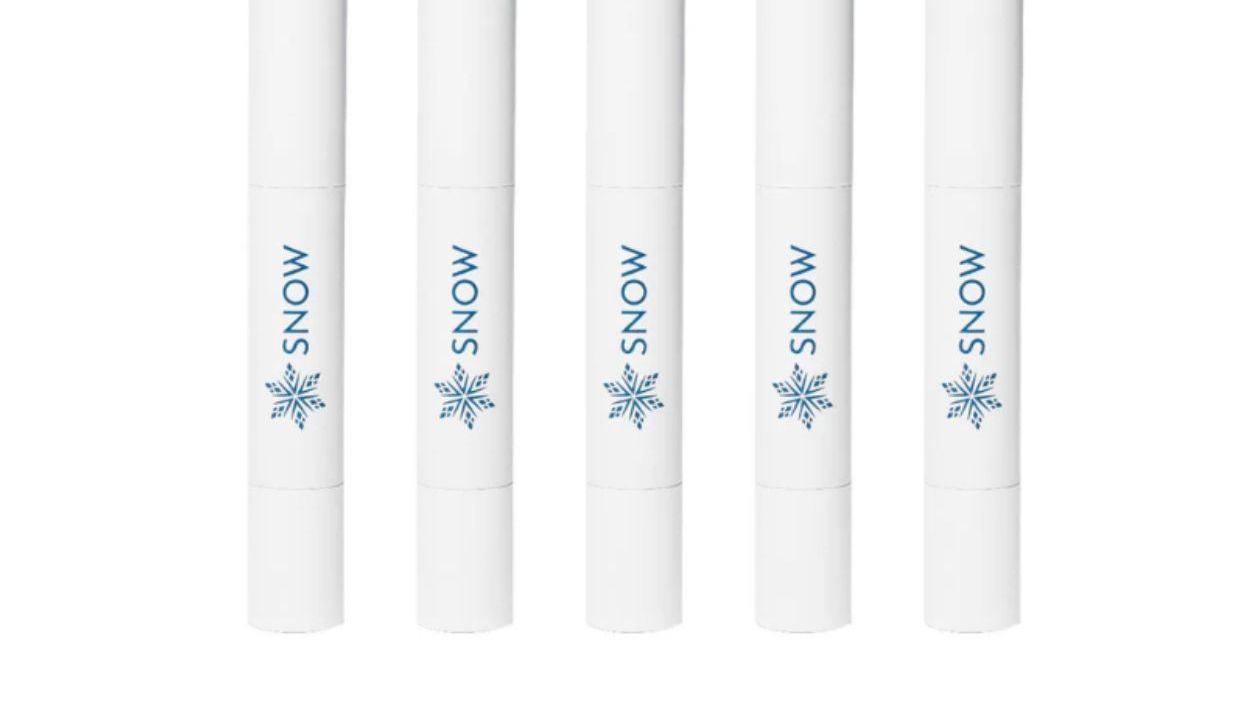
4. SNOW Teeth Whitening Serum Pen - For Flexibility
- Available in two formulations: Extra-Strength and Sensitive
- Offers flexible application times from just 9 minutes up to 30 minutes
- Leverages technology from their premium LED whitening systems
The SNOW whitening pens stand out for their adaptability to different needs and schedules. With both Extra-Strength and Sensitive options available, users can choose the formulation that best suits their comfort level, while the flexible application times make it easy to fit whitening into even the busiest lifestyle.
The Extra-Strength version combines both hydrogen and carbamide peroxide for powerful results, while the Sensitive formula includes potassium nitrate to minimize discomfort. Though there's a slight learning curve with the instructions, most users report noticeable improvements within a week of regular use.
Priced between $20-36 depending on the formulation and retailer, these pens offer good value considering their versatility and effectiveness.
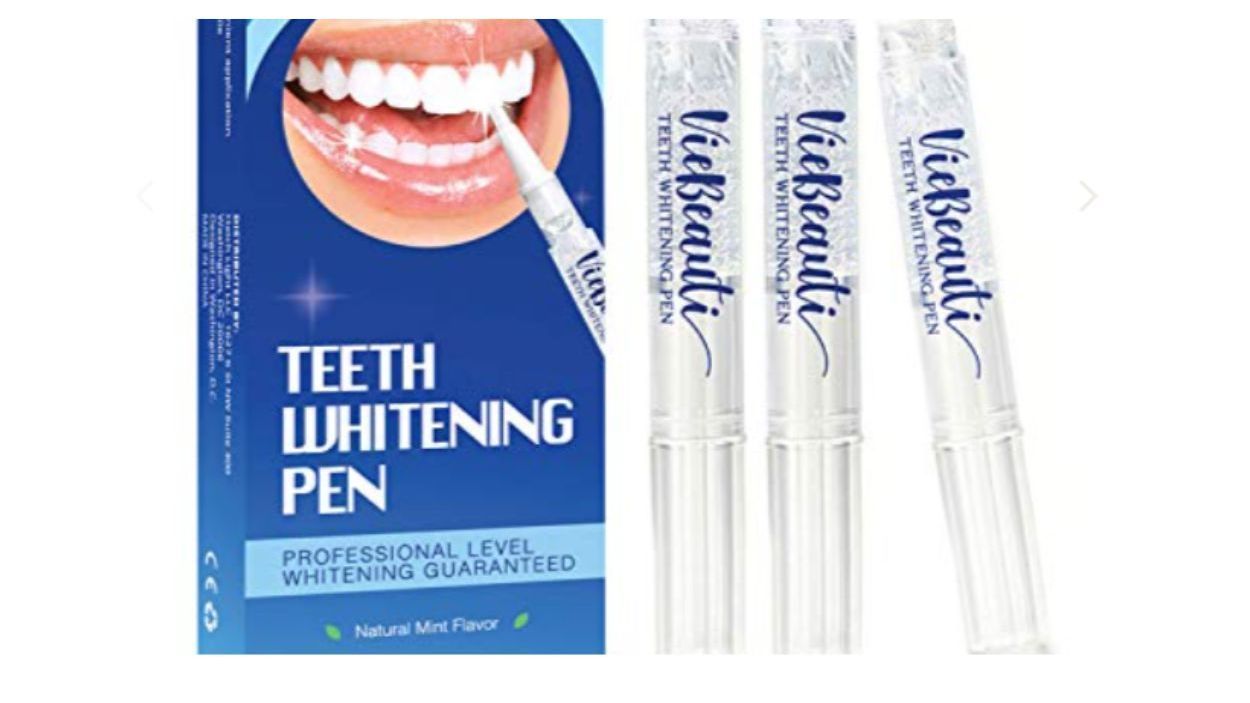
5. VieBeauti Teeth Whitening Pen - For Budget Considerations
- Contains potent 35% carbamide peroxide formula, one of the highest available without prescription
- Features a clear design showing remaining product and flexible brush applicator
- Often sold in cost-effective multi-packs (2-3 pens for $15-20)
The VieBeauti pen delivers maximum whitening power at a minimum price point, making it the ultimate budget-friendly option that doesn't compromise on results. Despite its high 35% carbamide peroxide concentration, most users don't experience significant sensitivity thanks to its well-balanced formula with enamel-protective ingredients.
What makes this pen particularly appealing is its practical design features combined with its exceptional value. The transparent barrel lets you monitor product usage, while the flexible brush applicator ensures easy access to all teeth surfaces. Application takes just 30 seconds twice daily, though you'll need to keep your mouth open briefly while it dries.
For those seeking powerful whitening without breaking the bank, the multi-pack offerings (typically 2-3 pens for $15-20) make this option unbeatable from a value perspective.
How Teeth Whitening Pens Work: The Science Behind a Brighter Smile
Teeth whitening pens use simple but clever science to brighten your smile. These handy tools pack a powerful punch in a small package. They're basically small tubes filled with whitening gel that you can brush right onto your teeth wherever stains bug you most.
Most whitening pens use hydrogen peroxide or carbamide peroxide as the main active ingredient. These chemicals are really good at breaking apart the complex molecules that cause stains. When you apply the gel to your teeth, the peroxide penetrates your enamel and starts a chemical reaction that breaks down stain particles from coffee, tea, wine, and other things that discolor teeth. This process makes your teeth look whiter and brighter.
What's great about pens is how precise they are. Unlike trays or strips that cover all your teeth, pens let you target just the stained spots. This is super useful if you've got just one or two teeth that need extra help, or if you wanna avoid getting whitening gel on sensitive gums. Plus, they're tiny enough to keep in your bag or pocket for quick touch-ups when you're out and about.
While professional dental whitening treatments definitely work faster and more dramatically, these pens are a good middle ground between expensive dental visits and basic whitening toothpaste. They give you more noticeable results than just brushing with whitening toothpaste but don't cost nearly as much as going to a cosmetic dentist.
What to Look for in a Quality Teeth Whitening Pen
Finding a great whitening pen isn't rocket science, but there are some key things to watch for if you want real results without wasting your money. I've tried dozens of these products over the years working as a dental hygienist, and these are the factors that actually matter:
Effectiveness and Speed
Let's be real – we all want results fast. But effectiveness varies a lot between products. Some pens might lighten your teeth by 1-2 shades in just a few days, while others take weeks to show similar results. The main difference? Often it's the concentration of the active ingredient. Higher peroxide concentrations (like 25-35%) typically work faster but might cause more sensitivity.
From my experience working with patients, most people start seeing changes after about a week of consistent use. But don't believe those "instant whitening" claims – real whitening takes time as the chemicals need to break down stain molecules gradually.
Ingredients and Formulations
The two main players in whitening formulas are:
- Hydrogen peroxide: Acts faster, breaks down more quickly
- Carbamide peroxide: Works more gradually, generally causes less sensitivity
Some of my patients with really sensitive teeth do better with alternative ingredients like:
- PAP (Phthalimidoperoxycaproic acid): Whitens without peroxide
- Coconut oil and essential oils: Natural alternatives that can help with mild staining
Many quality pens also include ingredients to protect your teeth, like:
- Potassium nitrate: Reduces sensitivity
- Fluoride: Strengthens enamel
- Hydroxyapatite: Helps remineralize teeth
Ease of Use Features
A pen that's annoying to use will just end up forgotten in your drawer. Look for:
- Simple dispensing (twist or click mechanisms)
- Quality applicator brushes that reach all tooth surfaces
- Quick-drying formulas so you don't have to sit around with your mouth open
- No-rinse options for on-the-go convenience
I've seen patients get frustrated with pens that leak or dispense too much product at once, so reliability matters too.
Sensitivity Considerations
Tooth sensitivity is probably the biggest complaint I hear about whitening products. If you've got sensitive teeth already, look for:
- Pens specifically labeled for sensitive teeth
- Lower peroxide concentrations (or peroxide-free options)
- Added desensitizing ingredients
- Dentist-recommended brands with good track records
Some tingles during whitening are normal, but actual pain isn't. If a pen hurts to use, stop using it and talk to your dental professional.
Value and Price Point
Price doesn't always indicate quality with whitening pens. I've seen $15 pens outperform $50 ones! Consider:
- Cost per application: How many uses do you get from each pen?
- Value packs: Multi-pens often offer better deals
- Long-term results: Cheaper isn't better if results fade after just days
For most of my patients, spending around $20-30 on a quality pen that lasts 2-3 weeks provides the best balance of effectiveness and value.
Comparing the Best Whitening Pens: Side-by-Side Analysis
Let's break down how these top contenders stack up against each other on the key factors that matter most:
Best Practices for Using Teeth Whitening Pens
Having supervised hundreds of patients through their whitening journeys, I've gathered some useful tips to maximize results while minimizing issues:
Application Tips
For the best results, follow these simple but important steps:
- Start with clean teeth – Brush and floss before applying any whitening product
- Dry your teeth – Blot with a tissue to remove excess saliva for better gel adhesion
- Use the right amount – More isn't better! A thin layer works best
- Focus on visible surfaces – Concentrate on the front surfaces that show when you smile
- Avoid the gumline – Keep the gel on tooth surfaces only to prevent irritation
- Follow timing instructions precisely – Don't leave products on longer than directed thinking it will work better
One trick I tell my patients: for overnight pens like Colgate, apply right before bed while lying down. This positions your mouth so saliva doesn't wash away the product as easily.
Sensitivity Management
If you experience discomfort:
- Reduce frequency – Try using every other day instead of daily
- Shorten application time – Some benefit is better than none
- Use a desensitizing toothpaste containing potassium nitrate for a week before whitening
- Take a break – If sensitivity develops, pause for 2-3 days before trying again
- Try applying coconut oil to gums before whitening to create a protective barrier
- Use these whitening toothpastes for sensitive teeth
In my clinic, I've seen that most sensitivity is temporary and resolves once you stop treatment. But if pain persists, that's a sign to see your dentist.
Maintaining Results
Whitening results aren't permanent, but you can make them last longer:
- Schedule regular touch-ups – Most people benefit from using whitening pens once every 1-2 months after initial treatment
- Limit staining foods and drinks – Coffee, tea, red wine, and berries are major culprits
- Use a straw for staining beverages to minimize contact with teeth
- Quit smoking or tobacco use – These cause some of the most stubborn stains
- Keep up with regular dental cleanings – Professional cleanings remove surface stains
I've noticed that patients who brush immediately after consuming staining foods/drinks maintain their whitening results much better than those who don't.
When to Consult a Dental Professional
While whitening pens are generally safe, there are times when professional advice is needed:
- Before starting if you have:
- Extensive dental work (crowns, veneers, large fillings)
- Active gum disease or untreated cavities
- Extremely sensitive teeth
- Discoloration from medications or injury
- During treatment if you experience:
- Severe or lasting pain
- Gum irritation that doesn't resolve
- Uneven whitening or spotting
- No results after 2 weeks of consistent use
Remember that professional whitening options like KöR Whitening might be more appropriate for severe staining or if you want dramatic results for a special event.
Frequently Asked Questions About Teeth Whitening Pens
Do teeth whitening pens actually work?
Yes, teeth whitening pens typically provide 1-3 shade improvements with consistent use, working best on yellow surface stains from food and beverages. According to research from Boston University, they're effective for maintenance but won't match professional treatments.
How long do results from whitening pens last?
Results typically last 1-3 months, depending on staining habits, oral hygiene, and enamel structure. Regular touch-ups can extend brightness for Manhattan professionals who want to maintain their smiles.
Are whitening pens safe for enamel?
When used as directed, quality whitening pens are safe for enamel according to a 2023 study. Never exceed recommended application times and take breaks between whitening cycles to minimize risks.
Can I use whitening pens with crowns, veneers, or fillings?
Whitening pens only work on natural tooth enamel, not on dental implants or other restorations. Consult a cosmetic dentist before whitening if you have visible dental work.
How often can I safely use whitening pens?
Start with daily use for 1-2 weeks, then reduce to 1-2 times weekly for maintenance, taking breaks between intensive cycles. Market research shows growing popularity among busy professionals, but moderation remains key.
Are whitening pens better than strips or trays?
Each option has specific benefits: pens offer precision for targeted stains, strips provide uniform results, and trays deliver the most thorough coverage but at higher cost. As a Tribeca dentist, I recommend pens for maintenance and touch-ups.
Can teeth whitening pens cause permanent sensitivity?
Permanent sensitivity is rare according to clinical reviews, with most discomfort resolving days after stopping treatment. Those with sensitive teeth, receding gums, or enamel issues face higher risk and should consult a dentist if sensitivity persists.
What's the difference between hydrogen peroxide and carbamide peroxide?
Hydrogen peroxide acts faster but carries higher sensitivity risk, while carbamide peroxide works more gradually with less sensitivity. For sensitive patients, I recommend carbamide peroxide formulations as they provide gentler, more sustained whitening action.
Want to explore more teeth whitening options? Check out our comprehensive guides on best whitening toothpastes in 2025, risks of charcoal toothpaste, effectiveness of whitening mouthwash, and best at-home whitening kits with trays.


